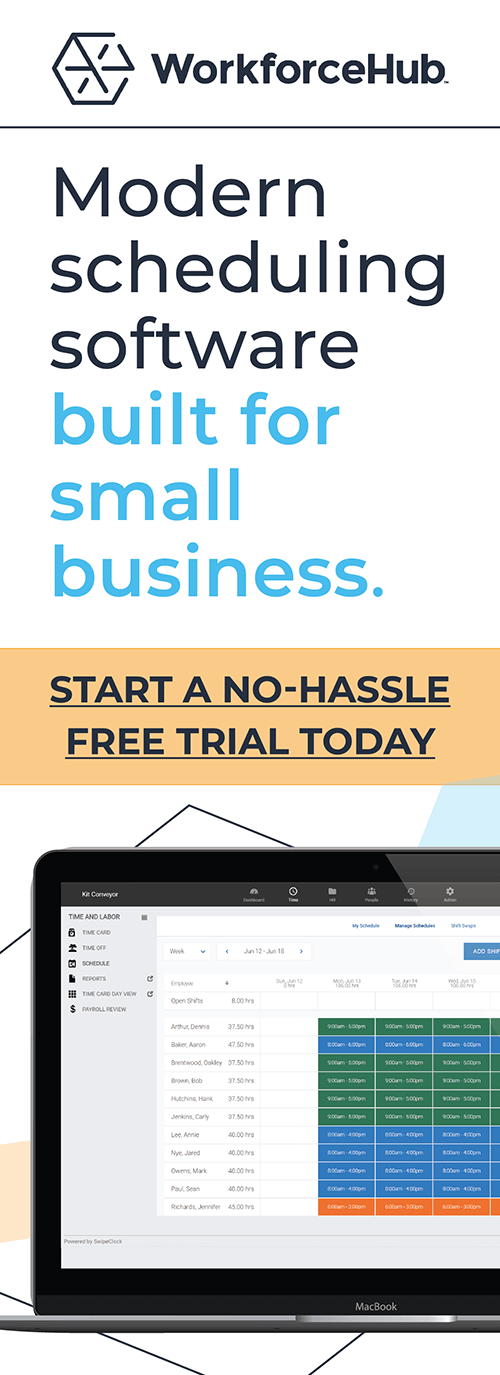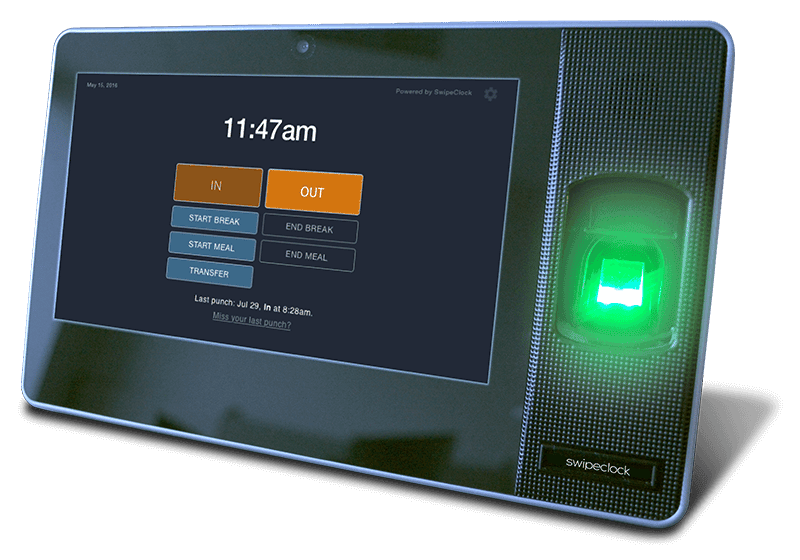10 Shift Planning Tips and Advice for Small Businesses

In the digital age, it’s surprising that 45% of small businesses have a paper-based shift planning process. In other words, employees get their schedule on a piece of paper! With free online calendars (like Google Calendar), any small business can provide anywhere, anytime schedule access for employees with a connected device.
Since scheduling involves real people who are responsible for your business success, efficiency can’t be the only goal of scheduling. Business owners must respect the profound impact scheduling has on their team members’ lives.
Once you’ve set the schedule for a week or pay period, create a template. Then you can copy it forward from week to week. It may need some tweaking, but you’ll have the basic framework and won’t ever have to start from scratch.
shift planning is central to effective operations. Do it well and it can become a tool for growth, productivity, employee engagement and retention.
An essential part of time and labor optimization is shift planning. Would you like to improve shift planning at your small business? We’ve gathered 10 tips along with actionable advice to help you.
First off, let’s review the goals of employee shift scheduling:
- Meet business demands
- Ensure employees can take care of your customers, clients, or patients
- Maximize productivity
- Support employee health and wellness
- Make the most efficient use of resources
- Maintain employee satisfaction and loyalty
- Comply with all labor laws
Clearly, shift planning is central to effective operations. Do it well and it can become a tool for growth–instead of a relentless time-drain.
Shift Planning Tips and Advice
1. Publish Schedules Online
In the digital age, it’s surprising that 45% of small businesses have a paper-based shift planning process. In other words, employees get their schedule on a piece of paper! With free online calendars (like Google Calendar), any small business can provide anywhere, anytime schedule access for employees with a connected device.

Photo by Ono Kosuki on Pexels.
2. Formalize Communication
Everyone should understand how to communicate about schedules. If some employees are texting, others are emailing and a few are leaving notes on a shared Google Calendar, it creates chaos.
Establish how your team will discuss schedules. If everyone has a phone, texting might work best. If several people are involved with a shift trade, the manager may use a group text so everyone is on the same page. Once you’ve defined the communication method, instruct employees to get manager approval for changes.
3. Build Employee Profiles
Before you can plan shifts effectively, you need important info on each team member:
- Contact information
- Shift availability
- Desired shifts
- Maximum number of hours desired
- Willingness to cover for no-shows and call-outs
- Full- or part-time status
- Note: If you have over 50 full-time equivalent (FTE) employees, you are considered a large employer under the Affordable Care Act (ACA). If you want to stay below the 50 FTE mark, ensure your part-timers don’t exceed 30 hours per week.
- Job role and employee type
- Certifications and skills
- Team, department, location, or workgroup
4. Create Shift Planning Rules
Once you’ve assembled employee profiles, it’s time to create parameters to guide shift planning. Of course, the rules will depend on your industry, organization size, compensation structure, labor budget, business hours, number of locations, and employee demographics.
FLSA, OSHA, predictive scheduling regulations, prevailing wage, local/state/federal labor laws, and/or union contracts also impact shift planning. Policies for overtime, PTO, and sick leave are also at play.
5. Plan Shifts Around Your Star Performers
You want at least one experienced employee working each shift. Your stars can often do the work of several new hires or less experienced team members. In addition, competent veteran employees can mentor less experienced workers and bring them up to speed quicker.

NYC firefighter. Photo by Aidan Bartos on Unsplash.
6. Use Shift Schedule Templates
Once you’ve set the schedule for a week or pay period, create a template. Then you can copy it forward from week to week. It may need some tweaking, but you’ll have the basic framework and won’t ever have to start from scratch. Fortunately, you can make as many templates as you need. For example, you may have a template for the busy season and another for the slow season. You may have a template for each business location. Or, you may have templates based on teams or job roles.
7. Publish Schedules in Advance
Since scheduling involves real people who are responsible for your business success, efficiency can’t be the only goal of scheduling. Business owners must respect the profound impact scheduling has on their team members’ lives.
Nevertheless, with good planning, you can balance efficiency with employee needs. It all starts with planning ahead. Do shift planning as far in advance as possible. Of course, make sure your employees understand that there may be changes. Many, however, won’t be affected. Research has revealed that there is generally less shift unpredictability than business owners predict.

Photo by Tiger Lily on Pexels.
8. Involve Employees in Shift Planning
Ideally, this should begin with the first interview. Find out when an employee is available and how many hours they want to work. Availability and shift preferences should be key factors when making hiring decisions. Then, involve your team members in shift planning.
In today’s tight labor market, providing a degree of schedule control can tip the scales for a job seeker with equally desirable options.
9. Allow Shift Trading
With manager-moderated shift trading, employees can post a shift when they have an unexpected conflict. Team members who want more hours can pick up available shifts. Managers can approve or reject shift-change requests or set rules. For example, an employee who picks up a shift must have the necessary skills or qualifications. Some teams may not need manager approval for shift changes as long as an employee can find a replacement.
10. Offer Flexible Schedules
Flexible work arrangements are popular and effective with office employees as well as many other positions. Let’s discuss the most common:
Flex time–May require core hours and then allow a flex schedule outside of that.
Compressed Workweek–Fewer days with longer shifts. (Someone who works ‘four tens,’ for example, works four 10-hour shifts.)
Remote Work–Once considered the exception, remote work has become mainstream due to–you guessed it–the pandemic. Remote work may require core time and allow the rest to be flexible hours. With hourly employees, business owners must track time carefully for accurate payroll and compliance.
Self-Service–Employees choose their schedules subject to company policies. There may be core times they are required to work or a minimum number of hours.
Split Shift–The shift is broken into two time segments. Employees who like to do errands or workout mid-day may like this shift.
Fixed Rotating Shifts–Most common in manufacturing, food and beverage, and healthcare. Employees have a mix of shifts that cycle from week to week. This type of shift planning spreads less-desirable shifts among team members. Note, however, that unpredictable shifts take a toll on employee health.
A 2016 study that tracked around 189,000 women over a period of 24 years, those who worked a rotating night shift schedule for more than 10 years had a 15%-18% greater risk of developing coronary heart disease. Irregular schedules can also affect employees’ ability to maintain positive relationships with their partners and children. This disruption can be a source of work schedule dissatisfaction, which is critical since schedule satisfaction has been shown to positively correlate with work engagement. Harvard Business Review
11. (Bonus!) Use Good Shift Planning Software
With employee scheduling software, you can cut the time it takes to create schedules by up to 80%! Let’s discuss the tools/features that allow you to create complicated schedules in a fraction of the time.
Team Schedule Templates–Create schedules by date, time, location
Individual Shift Templates– Create a shift template for a time slot, position, or employee
Replicate Schedule –Input the employee’s schedules and replicate forward
One-button Shift Build–After creating employee templates, press a button to populate a week’s shifts for each employee
Immediate Availability List–Shows immediately who is available for a given shift
Candidate Ordering–Sorts employees that are the best fit for a shift
Self-Scheduling and Open Shifts–Create open shifts with signup for any eligible employee
Automated Workflows–Prevents managers having to do the same basic tasks over and over
Learn more about shift planning software in our free eBook 9 Ways to Manage Employee Scheduling Like a Pro,
In Conclusion
Let’s recap the benefits of effective shift planning:
- Increased productivity and profitability
- Employee satisfaction and retention
- No more coverage gaps and overstaffing
- Ability to identify budgeted vs. actual hours for tighter project management
- Improved schedule adherence–reduced tardiness and fewer no shows
- Decreased unplanned overtime
- Streamlined compliance and recordkeeping
- Scalable, repeatable scheduling workflows
- Improved absence management
Swipeclock’s WorkforceHub includes Employee Scheduling, an intuitive, easy to use solution that can handle complicated team schedules and multiple locations. For more information about our shift planning solution, request a WorkforceHub demo today.
Simplify HR management today.
Simplify HR management today.
The Importance of Facial Recognition Time Clocks for Small Businesses
Updated April 17, 2024 A facial recognition time clock is no longer a luxury. Advanced biometric clocks are a must-have for today’s workplaces. A facial recognition time clock is the best technology for tracking employee time. It solves a multitude of problems employers are facing with their workforces. What is a Facial Recognition Time Clock?…
Read MoreEmployee Time Clock Hardware: Which is the Best?
Updated April 9, 2024 What is employee time clock hardware? An employee time clock is a hardware device for tracking work time. To use it, employees ‘punch’ in/out or ‘clock’ in/out. The term ‘punch in’ stems from early employee time clock hardware that required a physical card. With a traditional mechanical time clock, the process…
Read More





